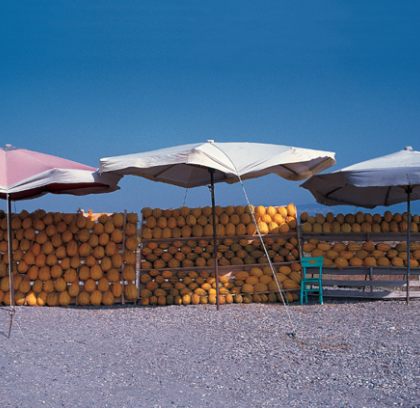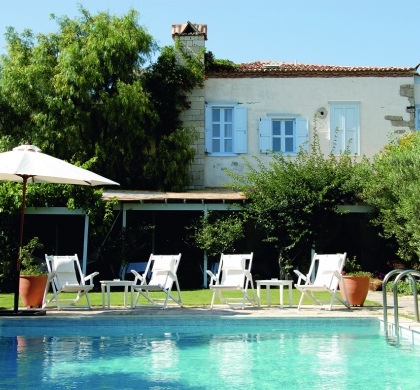Buy or gift a stand-alone digital subscription and get unlimited access to dozens of back issues for just £18.99 / $18.99 a year.
Please register at www.exacteditions.com/digital/cornucopia with your subscriber account number or contact subscriptions@cornucopia.net
Buy a digital subscription Go to the Digital EditionKırkağaç, some 60km east of Bergama, is on the Bandırma–Izmir highway, and melons are its speciality. Describing the local Hasenbey variety in Cornucopia 39, Berrin Torolsan writes: ‘…with its thick, knobbly, deep green and citrine rind and its buttery flesh oozing sweetness, [it] is regarded as one of the finest casaba melons in the world.’
An essential stop on the way north from a late summer Aegean holiday. Winter melons are the fruit to buy. Hang them in a dark place in string nets. Most survive well into winter, as their name suggests.
‘The taste was so delicious that anyone only accustomed to this fruit in Europe would scarcely recognise its relationship with the delicate and highly perfumed melons of Khiva,’ wrote the fearless cavalry officer and explorer Colonel Fred Burnaby in A Ride to Khiva, published in 1876.
It was on those steppes of Central Asia that the cultivation of sweet melons first took off, and to this day, hundreds of different varieties can be found there. The sweet melon, Cucumis melo, is known in Turkish as kavun, derived from the old Turkish kagun, which according to the 11th-century lexicographer Mahmut of Kashgar, was the word used by all the Turkic tribes in Asia. The fruit is so deeply rooted in the culture that a thousand years ago there were specific words for melon gardens, the possession of melons, even for having a thirst for melons – kagunsamak…
In the mid-1920s, the Russian botanist Professor Pytr Zhukovsky came to Turkey to collect vegetable and grain samples for an enormous project: a gene bank that would enable Russia to feed the masses left starving by the revolution… He was particularly surprised to discover two melon varieties – the ‘diamonds of Anatolia’, as he called them – that had become geographically isolated. One is the Van melon, from eastern Anatolia, the ancestor of all cantaloupe varieties; the other, from western Anatolia (though now grown all over the world), is the thick-skinned and long-lasting casaba…



 Issue 66, December 2023
Turkey’s Centenary Issue
Issue 66, December 2023
Turkey’s Centenary Issue

Cornucopia works in partnership with the digital publishing platform Exact Editions to offer individual and institutional subscribers unlimited access to a searchable archive of fascinating back issues and every newly published issue. The digital edition of Cornucopia is available cross-platform on web, iOS and Android and offers a comprehensive search function, allowing the title’s cultural content to be delved into at the touch of a button.
Digital Subscription: £18.99 / $18.99 (1 year)
Subscribe now